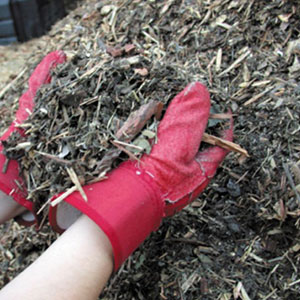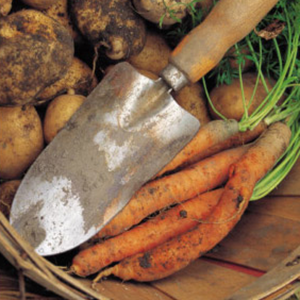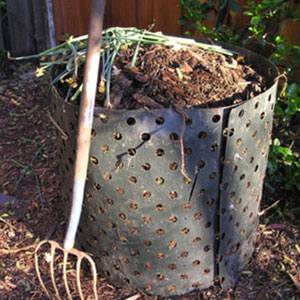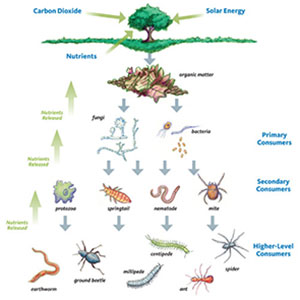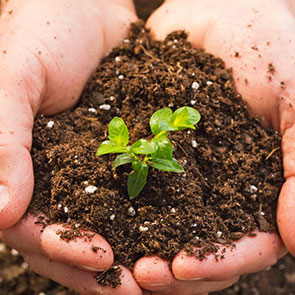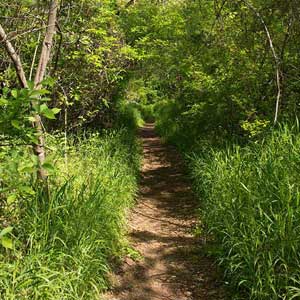Determine Soil Type and pH
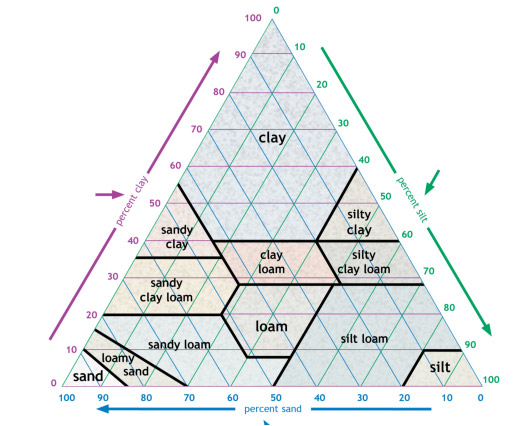
Soil is made up of varying components such as sand, clay and loam. Image credit: Sustainable Sites Initiative
Soil Texture
How coarse or fine soil feels depends on the size of the mineral particles. Sand, silt and clay — the major mineral particles — are responsible for the size and number of soil pore spaces. Pore space determines the amount of air and oxygen in soil, the drainage rate and soil’s capacity to hold nutrients. Sand grains are the largest particles and create large pores. Sandy soils drain quickly and do not hold water and nutrients well. While sand can be seen by the naked eye, silt particles are microscopic and feel velvety and smooth. Silt creates smaller pores in the soil and results in better water retention. Clay particles are the tiniest of all. When moist, they cling together and feel sticky. Clay soils have a tremendous capacity to hold water and nutrients, and soils rich in clay tend to suffer from poor air circulation and slow drainage.
Soils are rarely pure sand, silt or clay but rather a mixture of all three. They’re often grouped into one of 12 textural classes based on the relative proportions of these particles. Sands and loamy sands, for example, are more than 70 percent sand and share the characteristics of sand. Clays, sandy clays and silty clays are more than 40 percent clay and exhibit the characteristics of clay. Loams, the ideal soils celebrated in so much gardening literature, share the attributes of both — good aeration, drainage, and moisture and nutrient retention. Most vegetables do best in loamy soil. It is possible to grow a beautiful ornamental garden in any soil type, as long as the plants are adapted to the particular soil conditions.
Soil Structure

Illustrations of healthy, sandy and compacted soil structures. Image credit: Landscape For Life
How readily soil particles cling together to form aggregates, called crumbs or peds, is the measure of its structure. This determines how permeable a soil is, how well it retains moisture and nutrients, and how easily it allows plant roots to penetrate and grow.
Soils that are ideal for plant growth bind together to form loose, granular aggregates about the size of cookie crumbs and retain moisture and nutrients. Organic matter and thriving communities of soil organisms are critical to this good structure.
Sandy soils do not bind together and tend to have the consistency of dry cake mix. Clay soils bind tightly and become very hard when dry. Compacted soils have a “platey” structure, with multiple layers of flat, thin peds. Weight bearing down on the soil has caused the larger pores to collapse, restricting the movement of air and water and limiting the growth of plant roots.
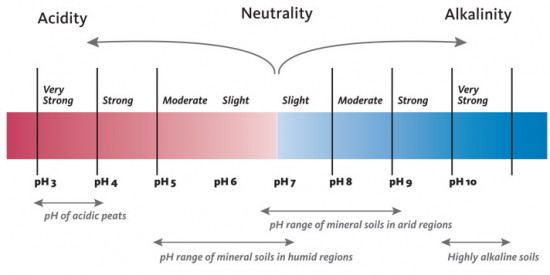 Soil pH
Soil pH
Soil pH is a measure of the acidity or alkalinity of the water held in its pores. The pH scale goes from 0 to 14, with 7 representing neutral. From pH 7 to 0 the soil is increasingly acidic, while from 7 to 14 it is increasingly alkaline.
Soil pH affects whether minerals and nutrients will be available to benefit plants. Before a nutrient can be used by a plant, it must be dissolved in the soil solution. Most plants prefer a slightly acidic to neutral soil, with a pH of 6 to 7, because that is the range in which all nutrients are readily available. In strongly acidic soils (pH 5.5 to 4), important nutrients such as phosphorus, potassium, calcium and magnesium are in short supply. The availability of phosphorus, iron, copper, zinc and manganese is reduced in slightly to moderately alkaline soil (pH 7 to 8).
Soil pH also affects the activity of soil microorganisms. Bacteria that decompose organic matter are hindered in strongly acidic soils. This prevents organic matter from breaking down and ties up nutrients, particularly nitrogen. Strongly acidic or alkaline soils can increase the solubility of some nutrients and minerals to the point that they become toxic to plants. For example, in very alkaline soils, the levels of calcium and magnesium are so high that they impede the availability of phosphorus.
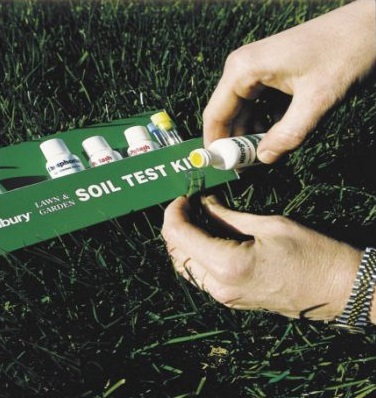
How to Determine Soil pH
One of the smartest things you can do for your garden is to get the soil tested. University extension labs or commercial labs conduct standard soil tests for about $25 to $40. This can save you money spent on plants not adapted to the soil conditions, as well as on excess fertilizer that can run off and pollute waterways. It will help you determine which plants are best suited to your garden. Most soil labs will send a soil test kit that includes sampling instructions, a sample bag and a survey form. Homeowners should be sure to fill out the survey in detail so the lab can make the most informed recommendations for their property.
Although they can vary somewhat by state, a standard soil test typically will tell you:
- Soil pH
- Levels of potassium, phosphorus, calcium, magnesium and sulfur
- Organic content
- Lead contamination and what to do about it
- Recommended nutrient or soil amendments
If they’re not part of the standard test, you can request tests for levels of nitrogen and other nutrients, sodium, soil texture, and other factors.There is likely to be an extra charge.

